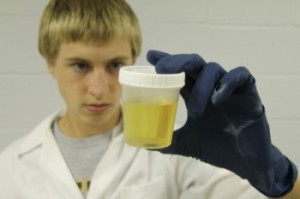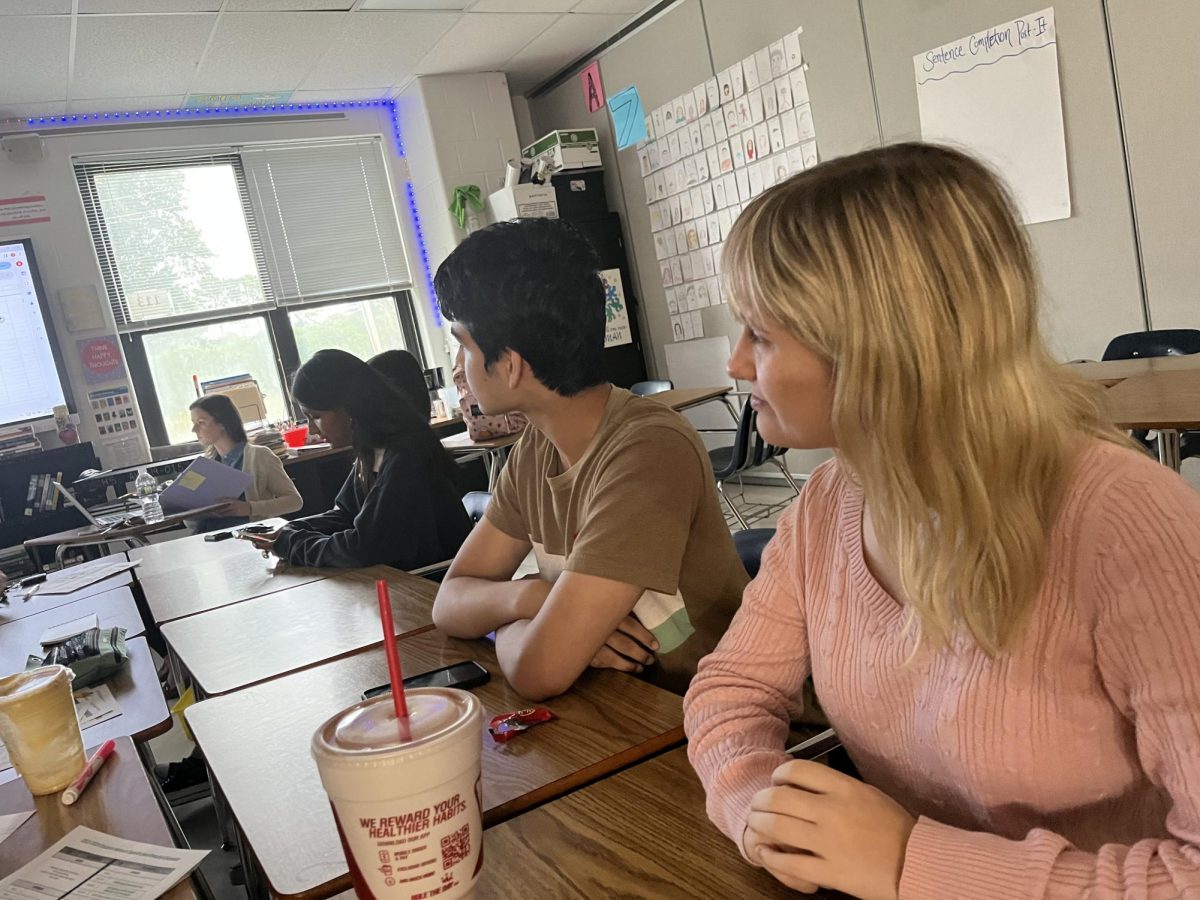 The classroom phone rings. After a few seconds on the phone, Erin Powelson’s teacher writes her a pass to the Activities Office. While walking down, Erin suspects that she’s simply being called down for sports. Upon arriving there, she’s asked to put her purse and books on the counter. Erin is then told that she has to complete a drug test.
The classroom phone rings. After a few seconds on the phone, Erin Powelson’s teacher writes her a pass to the Activities Office. While walking down, Erin suspects that she’s simply being called down for sports. Upon arriving there, she’s asked to put her purse and books on the counter. Erin is then told that she has to complete a drug test.
NOT ALWAYS POSITIVE
Last school year, the amount of drug tests with positive results increased from the 4.7 percent of the 2009-10 school year. Though that may not seem like much of an increase, 59 fewer tests were given in the 2010-11 school year due to an $8,000 thousand decline in the District’s drug testing budget.
“The Francis Howell High Schools are a mirror of the St. Charles County population,” Vice President of the FHSD Board of Education Steven Johnson said. “There are drugs being used in St. Charles County, so naturally they’re being used in our schools.”
Even though the percent of students who agree to random drug tests keeps increasing, FHSD aims to test only around 15 percent of the population of students in the school District every year.
“I don’t have a solution for administration,” Johnson said. “They think they’re running a good program, but there’s around six thousand kids and only 15 percent are being tested.”
BUDGETING
Each year, the District receives roughly $30,000 for drug testing. The amount fluctuates due to the fact that testing is funded by taxes. The District received $30,660 for drug testing in the 2009-10 school year while only receiving $22,890 last school year. This contributed to the fact that 716 tests were given last school year compared to the 775 during the 2009-10 school year.
“With limited funds available, yes, we could always do more, but schools reflect on our society,” Johnson said. “We need a partnership with our community.”
ABOVE THE AVERAGE
In 2010, a survey was given to freshmen throughout FHSD and Missouri to determine drug usage. For every drug on the survey, FHSD had a higher percentage of students who used it than the average of ninth graders throughout Missouri. These drugs included marijuana, which 18.2 percent of FHSD freshmen said they’ve tried compared to the state average of 16.2 percent of freshman, and heroin, which 1.1 percent of FHSD freshmen said they’ve tried compared to the Missourian freshman average of 0.6 percent.
“Heroin is getting very cheap and popular with high school kids,” Johnson said. “I’m not worried about someone testing positive but trying it and dying from it. That’s my main concern.”
GIVING CONSENT
Every student in FHSD who plays a school sport, belongs to a school sponsored club or parks on school grounds has to fill out a drug testing consent form at the beginning of the year. This says that they agree to be randomly drug tested anytime throughout the year whether their sport is in season or not.
“I think it’s a good system because it keeps [students] from doing it,” Powelson said. “It makes them more cautious about it.”
Sixteen I.D. numbers of North students are randomly chosen every week by the District’s drug testing company, Employee Screening Services, and the first eight who are present at school are the ones called down to get drug tested.
“We hope that the random drug test pool provides students with a deterrence to say no,” Director of Student Services Jennifer Patterson said. “If they feel pressured by peers, they could say ‘No, I could be tested.’”
HIGH HOPES
FHN Activities Director Mike Janes believes that more students look down on drugs now and that learning to say no is one of the biggest things kids should know how to do. He also has high hopes that FHN will become a school where drugs are seldom used.
“It’s more of a hope; it’s probably not a realistic goal,” Janes said. “I don’t think we could get rid of drugs completely. I think that should be a goal of ours- continue to educate kids on drug abuse.”
Story By Jordan Bryson










